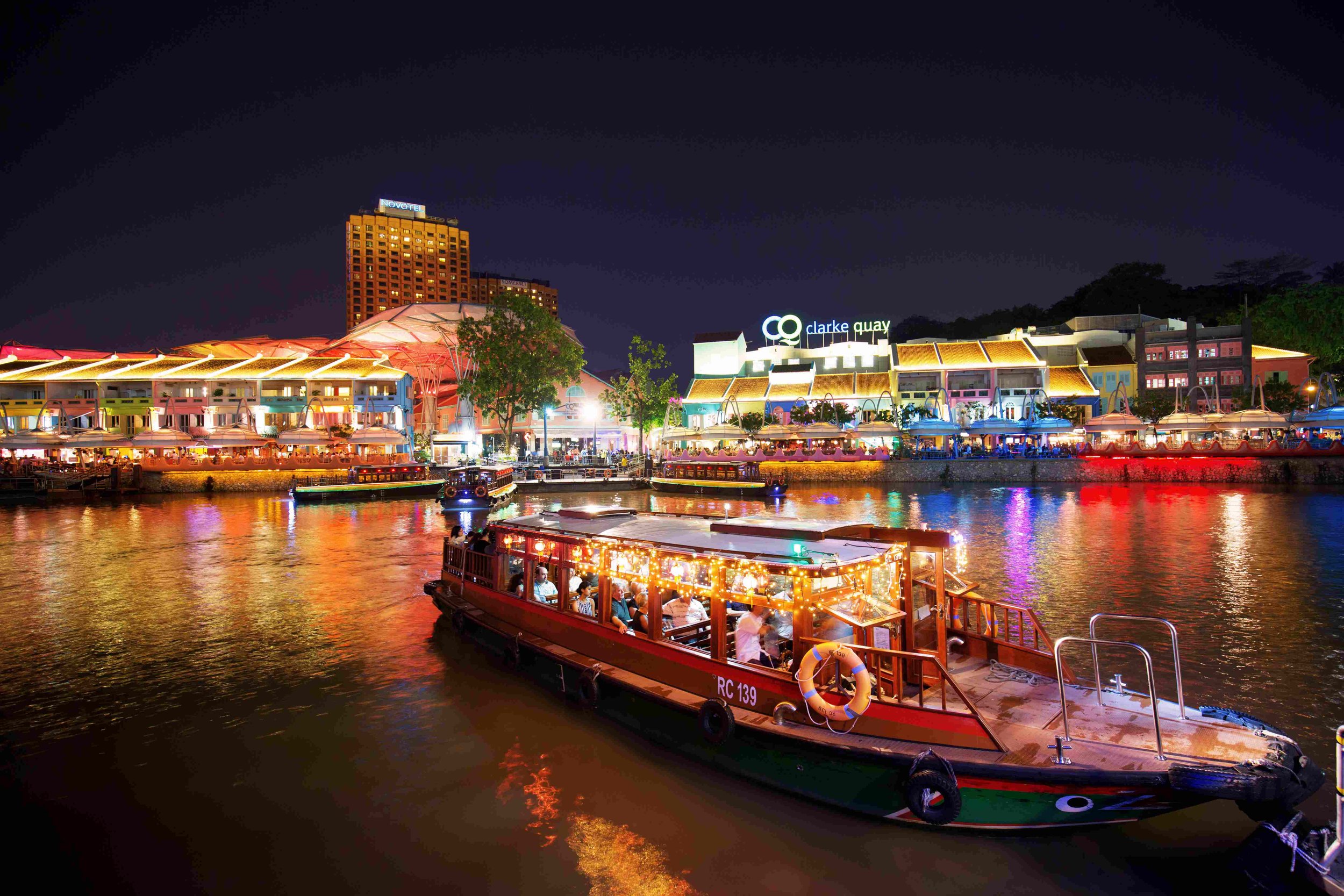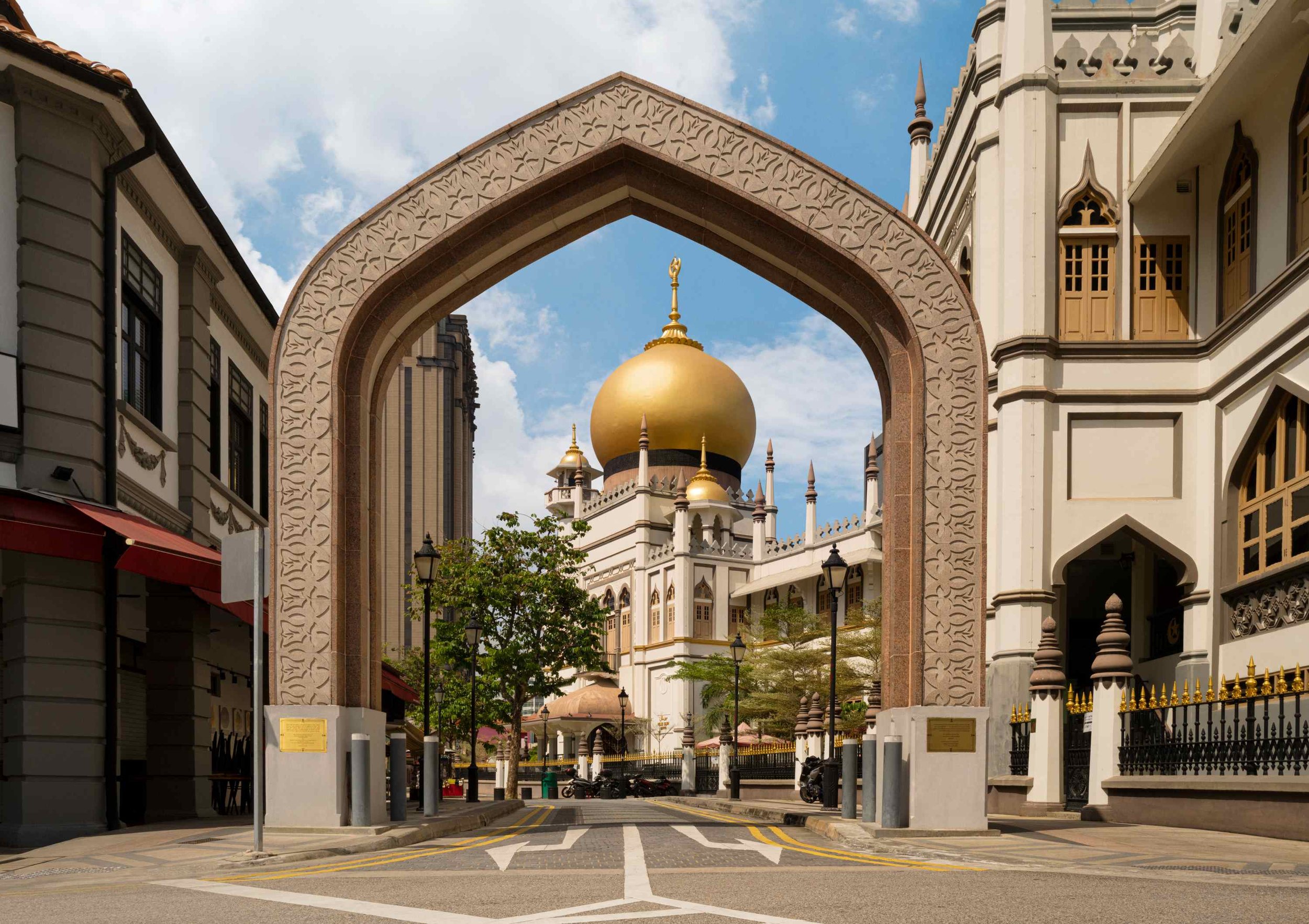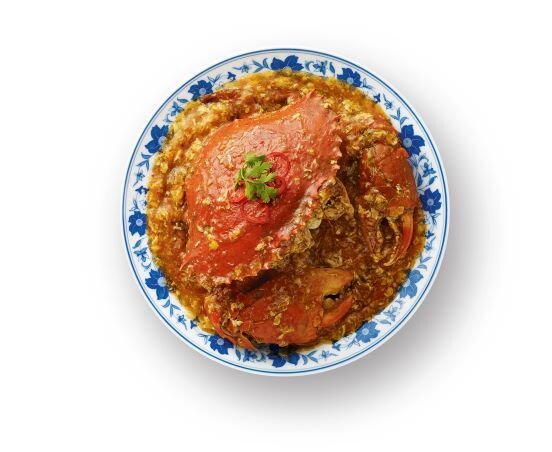Singapore City GUIDE: TOUR ITINERARIES by topic of interest
Interested in exploring Singapore’s History? Culture? Food? Architecture? on your Private Customised Tour and want to know where we’ll take you? Read on!
[Remember our Private Customised Tours are 100% flexible and will be tailored to your specific interests and length of the tour. Please let your guide know which locations are your priority as we, sadly, can not fit everything into a one-day tour.}
You may also find our Tour Itineraries by District guide helpful.
History | Culture |Architecture | Artst | Religion | Shopping | WW2 | Food | Sustainsbility
HISTORY
Singapore River: The Singapore River is a 3.2-kilometer-long waterway and was the center of trade, commerce, and finance. It was where Sir Stamford Raffles arrived in 1918.
Victoria Concert Hall: The oldest concert hall in Singapore which was built between 1902 and 1905 in honour of Queen Victoria. During World War II it served as a makeshift hospital during World War II.
Arts House at the Old Parliament House: The building is Singapore's oldest surviving government building which was Built-in 1827. It was originally built as a residence for the Scottish merchant named John A. Maxwell.
National Gallery: Home to the world's largest public collection of Singaporean and Southeast Asian art the National Gallery is housed inside the Old Supreme Court Building (opened 1939) and City Hall (opened 1929).
Please note that we can not guarantee visits to the interiors of Singapore’s historic buildings. Some are closed to the public and some are open but only at specific times. If a building is accessible on the day of your tour we can have a walkthrough but we are unable to give full in-depth tours of the interiors. Should an interior visit to a specific building be very important to you, please tell us in advance so we can make appropriate plans for you.
CULTURE
Kampong Glam (Malay Ethnic Quarter): Once populated by Arab, Boyanese, Bugis, and Javanese people, the area today is an eclectic blend of history, culture, and a trendy lifestyle scene.
Little India (Indian Ethnic Quarter): One of the most vibrant and charismatic ethnic districts in Singapore. Little India showcases a mix of old Singapore and new.
Chinatown (Chinese Ethnic Quarter): Chinatown is a melting pot of diverse cultures and traditions–an enclave of storied heritage mirroring the history of Singapore.
ARCHITECTURE
Marina Bay Sands: Singapore’s most iconic hotel and one of the most impressive architectural wonders In Singapore. The resort is designed by Moshe Safdie, who says it was initially inspired by card decks. The megastructure was unveiled in the year 2010.
Pinnacle at Duxton: The building is one of Singapore’s iconic public housing projects where visitors can enjoy a panoramic skyline view of Singapore. The building was designed by a Singaporean architecture company, ARC Studio Architecture + Urbanism, in collaboration with RSP Architects Planners and Engineers.
Park Royal Pickering: The hotel was designed by WOHA, a Singapore-based architecture firm. Designed to be a "hotel-in-a-garden" that was built in 2013. Admire this beautiful structure from the outside on your customized tour.
Capita Spring: Go up to the 51st floor on top of Capita spring and indulge your eyes in the beautiful view of the whole city. The building was designed by the architectural firm BIG and architect Carlo Ratti. With a height of 280 m (920 ft), as of 2022.
Raffles Hotel: An exemplary showcase of neo-Renaissance architecture. It was established by Armenian hoteliers, the Sarkies Brothers, in 1887.
Eden Condo: Famous for its flower bulb look-a-like planters for balconies in the very expensive District 10 area of Singapore. It was completed in the year 2020 and was designed by architect Heatherwick Studio.
The Interlace: The Interlace was designed by German architect Ole Scheeren, known for conceptualizing some of the world’s most head-turning buildings. Looking at the building from the outside, it looks like Jenga blocks stacked upon each other.
The Learning Hub - Nanyang University: The Hive, also known as Learning Hub was designed by Heatherwick Studio and executed by lead architect CPG Consultants. The towers are arranged around a public atrium that would allow students and professors from different disciplines to meet and interact with each other.
Gillman Barracks: An important part of Singapore’s arts landscape, the Gillman Barracks is a well-loved place among art enthusiasts and collectors.
Henderson Waves Bridge: Henderson Waves Bridge is the highest pedestrian bridge in Singapore. Unveiled in 2008, its fantastical shape has lent an unexpected jolt of design savvy to the lush green belt in the south of Singapore.
Fullerton Hotel: Fullerton Hotel Singapore, is a grand neoclassical landmark that was once Singapore’s General Post office. It has since been restored to accommodate travelers.
Peranakan Houses in Katong: These colorful vibrant shophouses are a hallmark of the Katong and Joo Chiat area. Shophouses are inspired by their unique pre-war architecture – colorful two-story shophouses and terrace houses with ornate facades, intricate motifs, and ceramic tiles.
ARTS
Tiong Bahru: Tiong Bahru is home to a collection of painted murals, contributed by local artists.
National Gallery: The building is a state-of-the-art facility that oversees the world’s largest public collection of modern Southeast Asian art from the 19th century to the present.
Chinatown Street Art: Chinatown is also known for its beautifully painted wall murals along the street. Each mural provides visitors with Instagram-worthy photo opportunities that will surely stand out on their social media feeds.
Haji Lane: Haji Lane has a collection of street art murals in vibrant hues on the façades of bars and stores along the street. Lined with multi-label stores, quirky boutiques, and cafes, it is a popular youth hang-out spot.
RELIGION
Sultan Mosque (Religion: Islam): The iconic Sultan Mosque, built in 1824, is a landmark of the Kampong Gelam district which attracts many who are keen to discover the culture and history of Malays.
Sri Mariammam Temple (Religion: Hinduism): With roots dating back to 1827, this temple is Singapore’s oldest Hindu temple and was formerly known as Mariamman Kovil or Kling Street Temple. It was later rebuilt as Sri Mariamman Temple, dedicated to the goddess Sri Mariamman, who is believed to be able to heal the sick.
Buddha Tooth Relic Temple (Religion: Buddhism): One of the major Buddhist temples in Singapore, the Buddha Tooth Relic Temple and Museum is a fine example of the Chinese Tang dynasty style of architecture.
St. Andrews Cathedral (Roman Catholicism): Saint Andrew's Cathedral is an Anglican cathedral in Singapore. It is the main cathedral church of the Anglican Diocese of Singapore and serves as the mother church of 27 parishes and more than 55 congregations.
Thian Hock Keng Temple (Taoism): Built in 1840 with the support of prominent members of the Hokkien (Chinese dialect group) community, Thian Hock Keng Temple is one of Singapore’s oldest Chinese temples. Dedicated to Mazu, the Goddess of the Sea, devotees came here to give thanks and pray for safe passage across the sea.
Telok Ayer Chinese Methodist Church: The church was founded in 1889 by Dr. Benjamin West, a Methodist missionary and medical doctor who preached from a shophouse in Chinatown. He delivered sermons in Malay to a humble crowd of around 30 people. His sermons were then translated into Hokkien, a local dialect.
Chesed-El Synagogue: Chesed-El Synagogue is one of two synagogues in Singapore. It is a place where the Jewish community participates in religious ceremonies that mark significant milestones in their lives.
SHOPPING
Orchard Road: Singapore's most beloved shopping district. Where you can find shops like Takashimaya, Centers there. Paragon , Tangs Plaza.
Vivo City: The largest shopping mall in Singapore located in the Harbour Front precinct of Bukit Merah. Here you can find more average prices or brands.
Chinatown Market: From lucky cats to silk robes, this is the place to go shopping for local souvenirs There's also a good range of street food carts with crispy duck and fresh dim sum. You also get other items like street opera masks, traditional clothing, dragon candles, and Chinese calligraphy.
Tekka Centre: Located in Little India, it sells everything from Bollywood music to silk for saris. There is plenty of food to suit all palates. There is a spice section in this area too. Downstairs there is plenty of food in the hawker center as well as wonderful spice shops too.
There are many beautiful boutiques in Singapore selling unique souvenirs that are definitely a must-grab before you leave for Singapore! Check out our shopping guide for the complete lists.
WW2
Woodlands Waterfront: During World War II, the waterfront served as the link between Singapore and the Royal Malaysian Navy.
Kranji Beach Battle Site: Kranji Beach was one of the battle sites in the defence of Northwestern Singapore between Australia and the Japanese brigade.
Former Ford Factory: The place where the British Forces surrendered to Lieutenant-General Yamashita Tomoyuki
Kranji Cemetery and War Memorial: A place to honour people who died in the line of duty during World War II.
Lim Chu Kang Jetty: The pier was a Japanese landing site in 1942 when they invaded the northern part of Singapore during World War II.
Labrador Artillery Battery at Labrador Park: Labrador Nature Reserve was one of the many artillery forts built by the British troops to defend Singapore waters during World War II.
Gillman Barracks: The building used to be one of the final battle sites before Singapore fell to the Japanese and was even a prime training ground for national servicemen up till 2012.
Battlebox: The Battlebox was a top-secret bunker constructed during World War II. It served as an underground command centre for British-led troops in Singapore during World War II. Visits last one hour and cover the fall of Malaya, Singapore and more.
FOOD
Local Flavours: Some of the local flavors that are a MUST try include Chicken rice, a South Indian flatbread called Roti Prata, Malaysian food Nasi Lemak, and a lot more! To get a complete list of mouthwatering dished can be found in our Singapore have a look at our local flavors guide.
Hawker Centres: A visit to Singapore would not be complete without a meal at a hawker centre, where Singaporeans from all walks of life tuck into affordable local food in a casual setting. Newton Food Centre, as featured in the movie Crazy Rich Asians, is one of the most popular. Other hawker centres worth visiting are Old Airport road, Maxwell, and Lau Pa Sat. For a complete list of Hawker centres check out our Hawker Centre guide.
Restaurants: Singapore’s food scene caters to all budgets and dietary preferences. Several restaurants in the country, with some dating back to pre-war days, have stood the test of time. These institutions are a testament to the locals’ enduring love for authentic local food. Check out the complete list of must-try Singapore Restaurants.
SUSTAINABILITY
Park Royal Collection Pickering: This hotel is an iconic green structure, with a hotel-in-a-garden design concept, which reflects and enhances Singapore’s garden-city reputation. The hotel seamlessly blends cutting-edge environmentally-friendly practices and technologies. The extensive landscape areas are designed to be self-sustaining and rely minimally on precious resources – water usage is minimized by rain harvesting and usage of NEWater. The cascading greenery keeps the west-facing walls cool and reduces energy consumption for cooling guestrooms and the building’s open-sided concept is configured to create a maximum perimeter for natural light and views
Oasia Hotel Downtown: Oasia Hotel Downtown, Singapore stands out with a unique silhouette covered by a lush green façade that is a massive vertical garden. .This green façade is covered in 21 species of creeper plants arranged at different heights, with an additional 33 species of plants incorporated into its architecture, providing a haven for birds and animals.
Gardens by the Bay and Super Tree Grove: The Supertrees capture and convert solar energy to electricity. The air in Flower Dome is de-humidified by liquid desiccant (drying agent) before it is cooled. This cooling process means that the two domes consume about 30% less energy compared to buildings using conventional cooling technologies.
Jewel Changi: The airport sets environmental targets by conserving energy, and water recycling. Its materials are carefully chosen and its infrastructure systems are energy-efficient and responsive to our tropical environment.
Marina Barrage: Built across the Marina Channel, the Marina Barrage is Singapore’s 15th reservoir. It acts as a flood control measure for low-lying parts of the city centre by keeping out the tidal influence. It is a showpiece of environmental sustainability where green principles are applied in the design, construction and operation of the barrage. Pay a visit to the Sustainable Singapore Gallery (SSG), housed in Marina Barrage, to learn about Singapore’s sustainability measures.
Singapore Botanic Garden: The Singapore Botanic Gardens (SBG), with its 82 hectares of lush landscapes, photogenic pavilions, and sculptural landmarks, is Singapore’s first UNESCO heritage site. Most importantly it is home to thousands of giant forest trees that are excellent at absorbing and storing carbon. These massive trees can store 80 million kilograms of carbon dioxide in their lifetimes.



















































